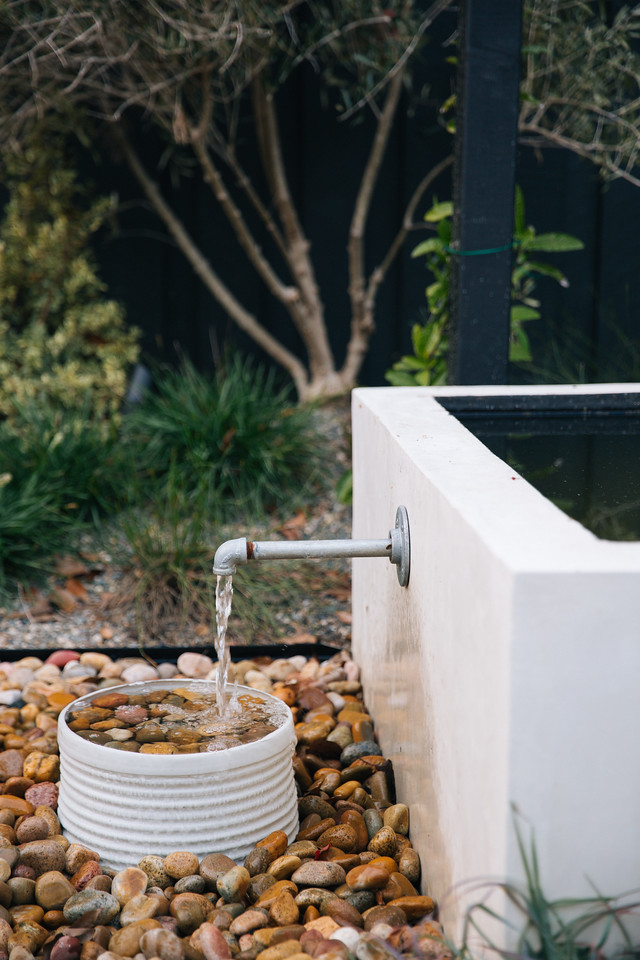
I knew for the past year or so that the Los Angeles Times would eventually publish an article on the Glatstein family’s Long Beach garden designed by ceramicist Dustin Gimbel a few years back. Even so, the March 31, 2020 appearance of “In turbulent times, a magical art-filled garden offers solace,” by Lisa Boone, managed to catch me off guard. I’d seen these photos by Mitch not long after it was finished, so I knew the layout and incredible detail work by Dustin, but the story of the making of a garden told in hindsight, at a time when we’re in the teeth of a pandemic, can’t help but feel epic and visionary. Boone’s choice to frame the garden against this backdrop was the perfect mechanism for exploring what this garden means to the Glatsteins and why someone would pour their creative energy into designing such a place. In the context of these first months of 2020, a garden naturally assumes the level of importance and can be discussed with the same design enthusiasm as any domestic space, albeit one where kids and ducks roam freely, animated by a revolving cast of wildlife. It’s a long, lush piece with lots of detail and depth, one I know you’ll enjoy. Much has grown in since these pictures, new projects have been undertaken, sheltering in place has been decreed, and the garden absorbs all of it with utter grace. It’s a wonderful piece of writing about a project that gives new life to the words “dream team”; the clients and designer sharing the same dream of what a garden can be and mean for a family in a busy neighborhood, in both happy and anxious times — playful, sculptural, serene, stimulating, filled with interest for the plantsman (Jeremy), and brimming with daily wonders for the kids. Have a look at these old photos by Mitch to find your way around, but be sure to read the article which includes lots of recent photos as well as some “before” photos too.

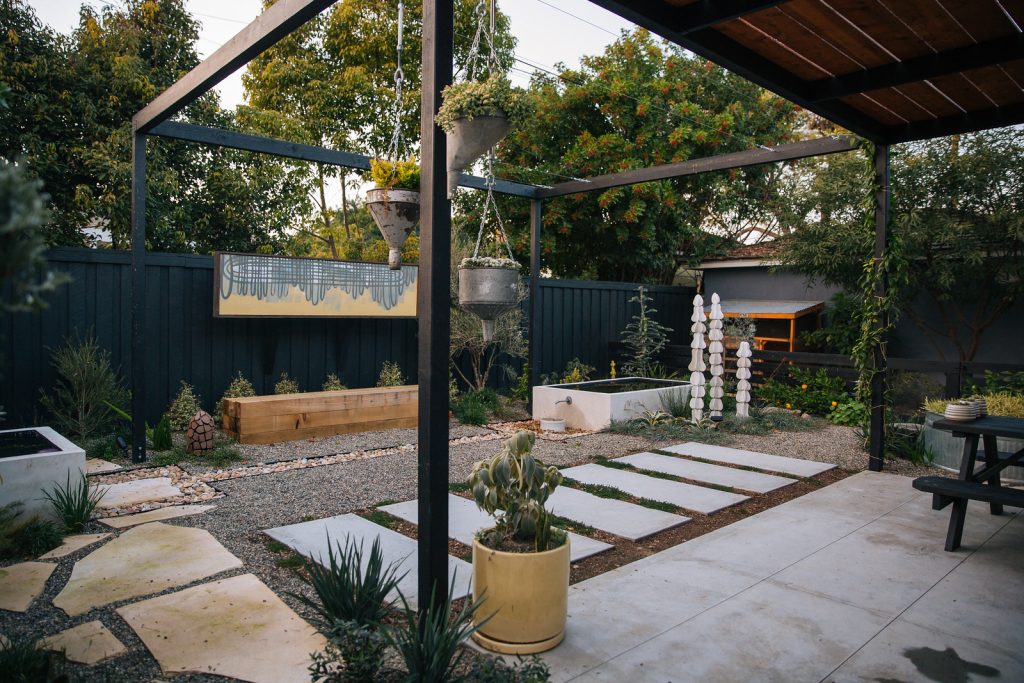

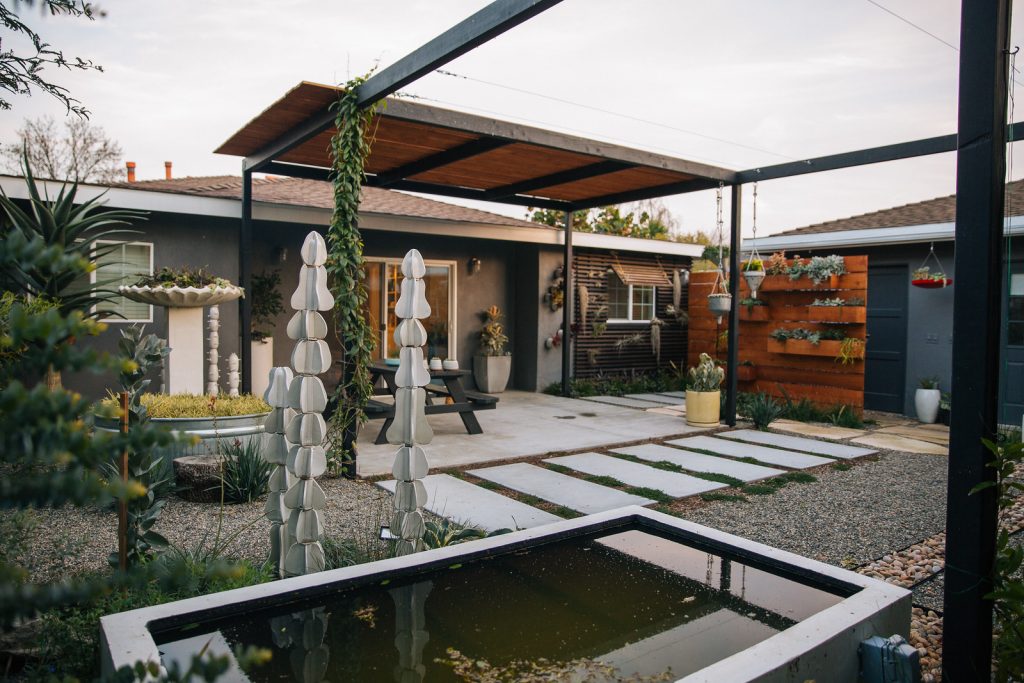
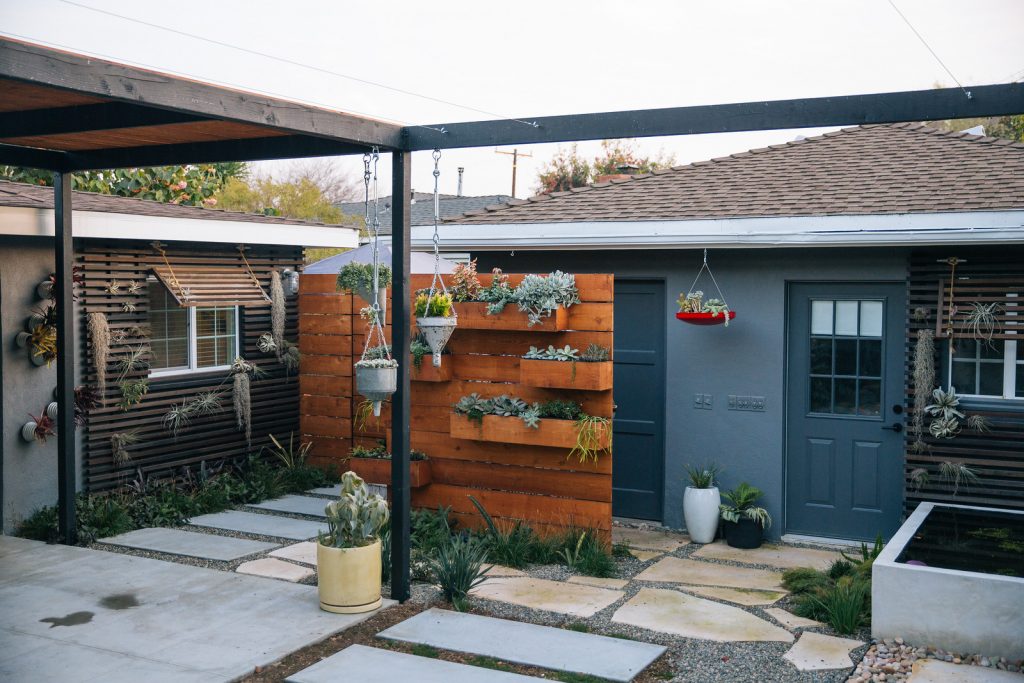

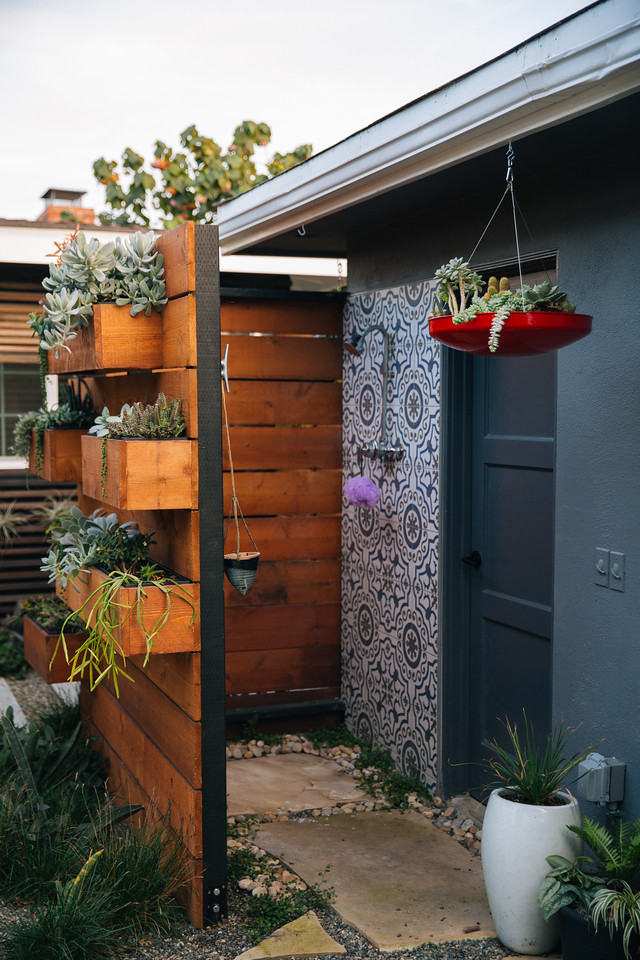
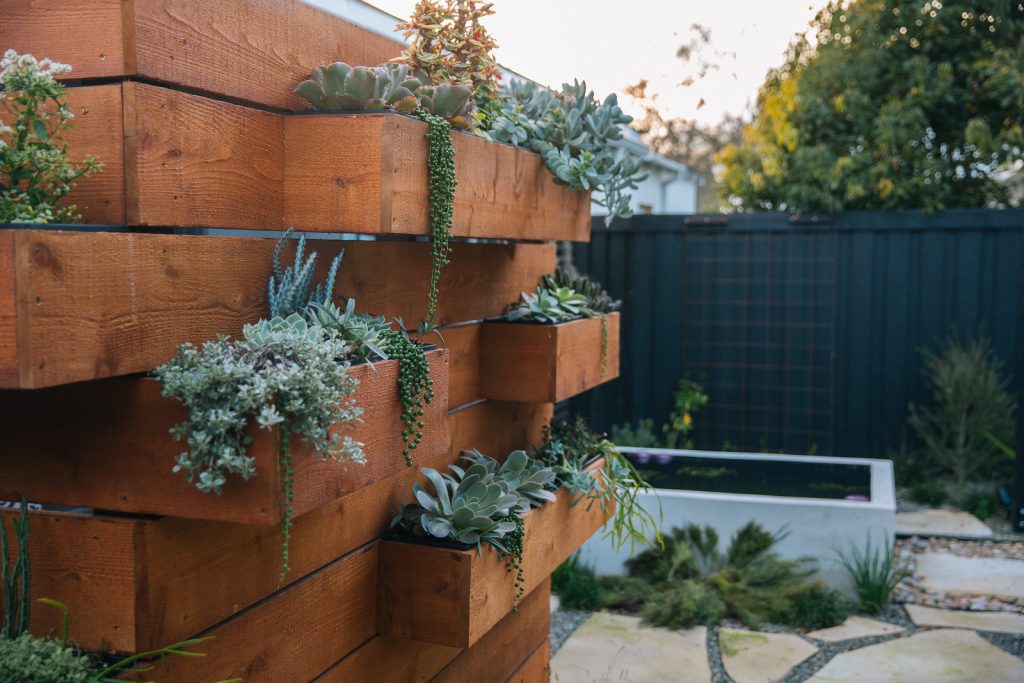

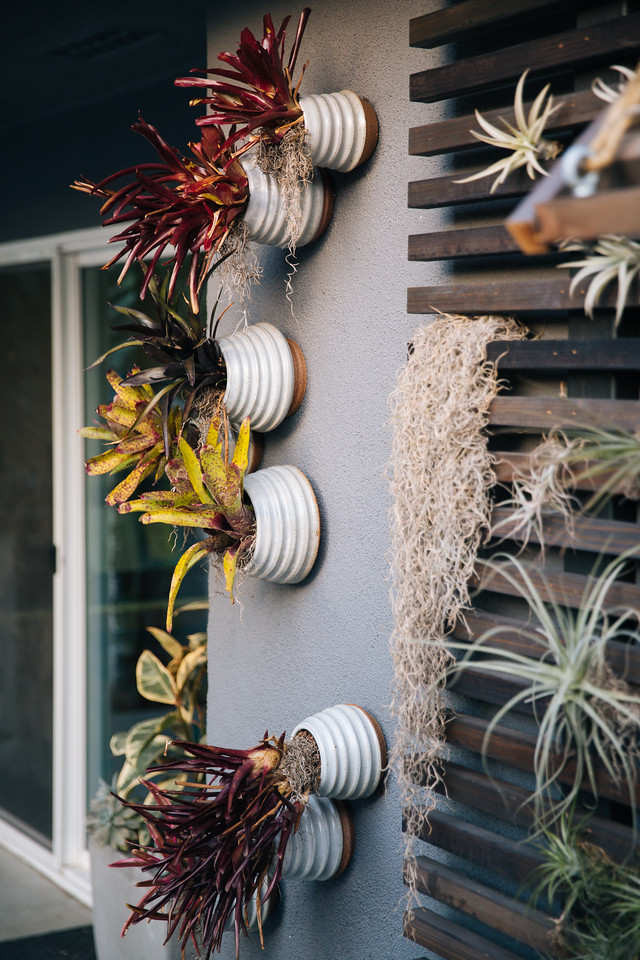

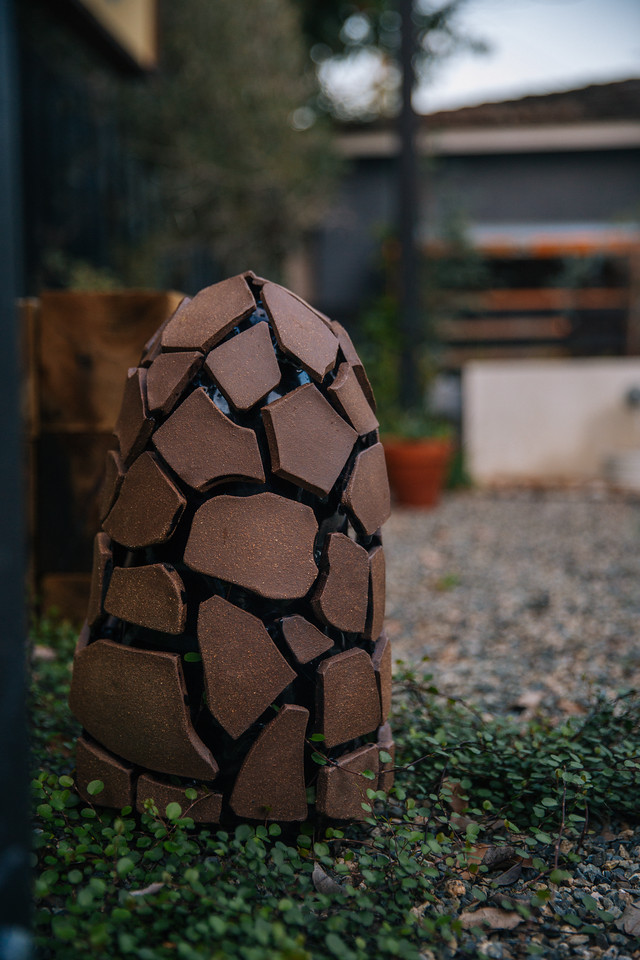


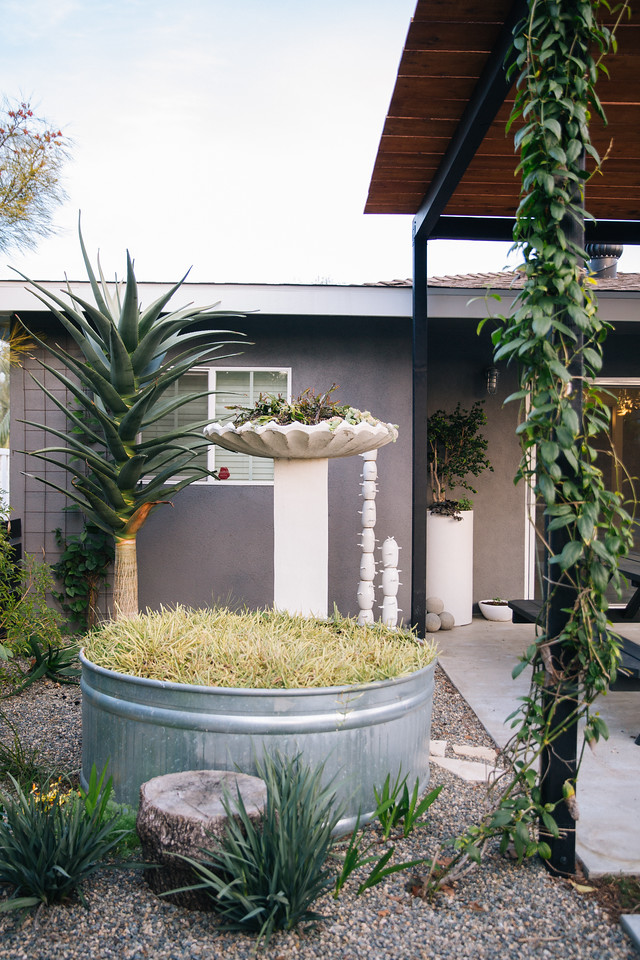
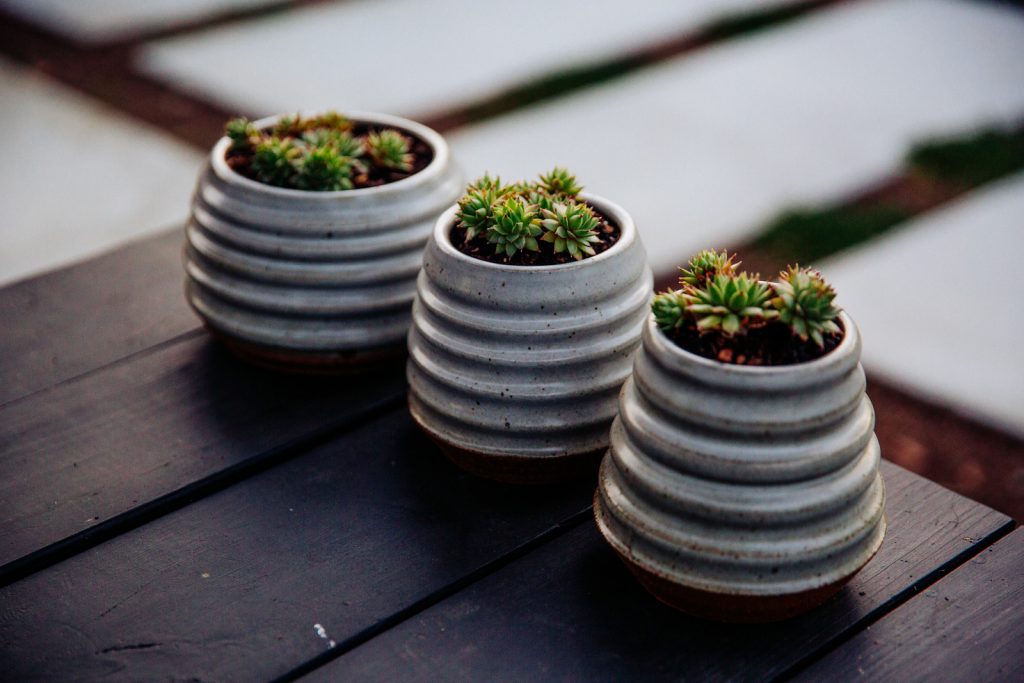
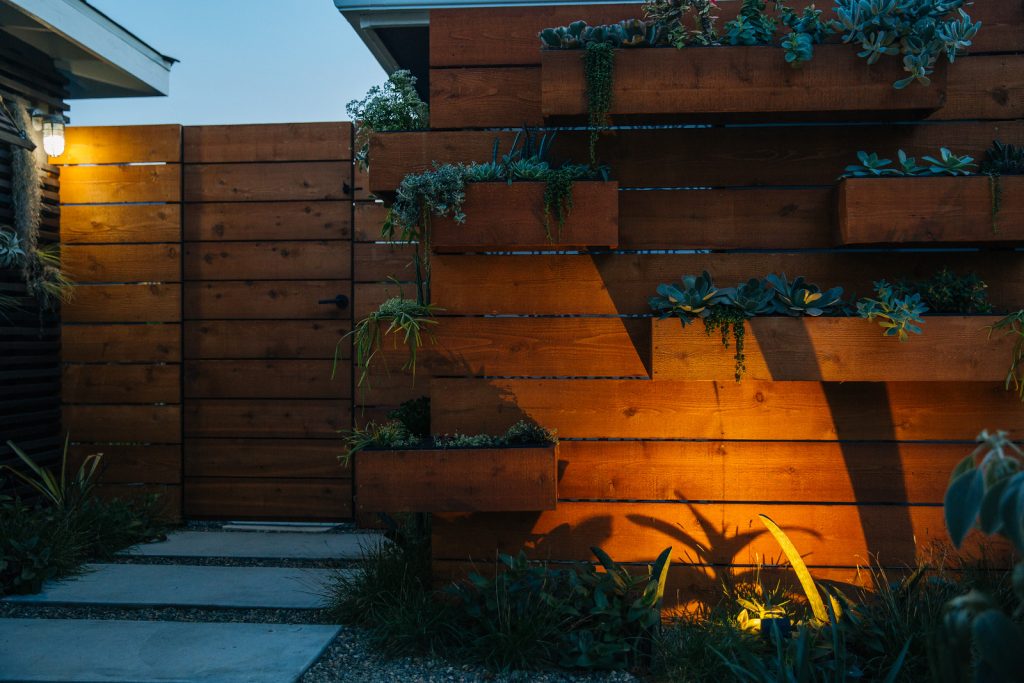
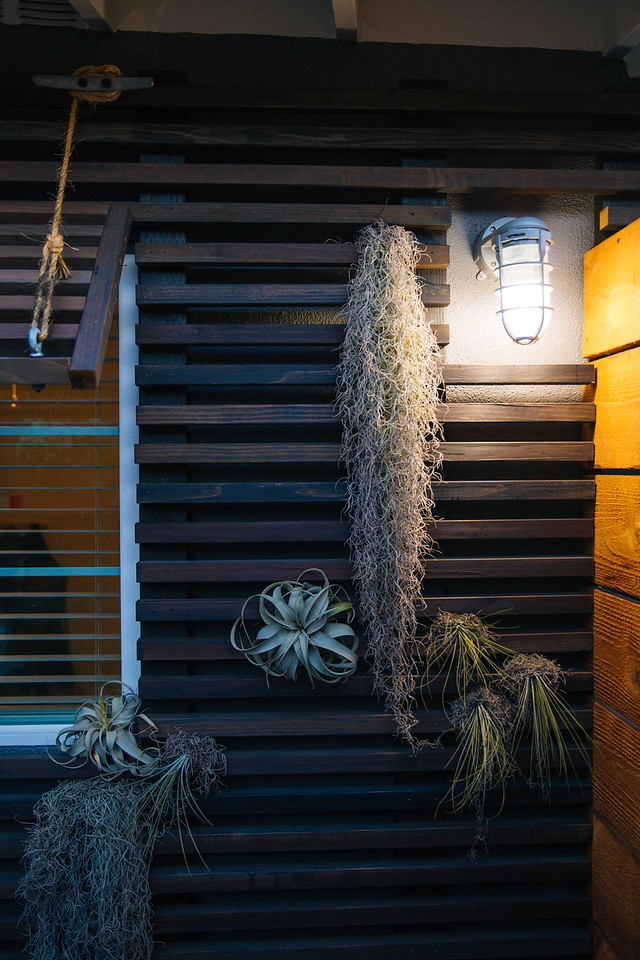
photos by MB Maher

Thanks for this post, Denise! I somehow entirely missed the 3/31 LA Times piece. MB Maher’s photos are better still. I love that shower screen fence with the bump-out planters, as well as the side-wise wall-mounted bromeliads. Some of the hanging planters made me think of those in your own garden. Dustin’s pandemic gardening recommendations in the Times article were great too.
I saw the article in the LA Times and recognized the Gimbel ceramics straightaway. Fun garden, with lots of variety in a comparatively small space. Complements to MB on excellent photos!
Can’t wait to give you a tour in person!
The LA Times piece alone would have left me confused. I needed this blog post—and Mitch’s photos—to help illustrate what the garden layout was. It’s a beautiful space and I enjoy following Jeremy on Instagram to see bits and pieces of it.
As for Dustin’s show at the Sherman Gardens and Library I assume that’s on hold?
@Kris, yes, Dustin gives me credit for the funnel planters, but I have to admit that my first funnel planter came from Reuben/Rancho Reubidoux years ago. Glad you liked the tour!
@Hoov, I loved seeing the new photos with all the signs of life and activity, but I’m really glad Mitch got in their early, with good light, to document everything.
@me too, Jeremy!
@Loree, next time you’re in town I bet Jeremy wouldn’t mind showing you around. As far as I know, Dustin’s installation is going forward even tho the Sherman Gardens are currently closed. I’ll double-check that with him — it’d be great to get some photos of that too.
A very effective co-mingling of 21st c contemporary landscape elements, properly installed on a miniature residential scale, populated with a plant enthusiast’s palette. An “investment” is an interesting choice of words, particularly for a pair of adults with children. Investing, presumably, not in the (functional) bones but in the artist’s trademarks? It definitely screams, politely and in Janovian fashion, Gimbel.
As a practical, utilitarian* answer to covid-19, not a smidge, but a good if fleeting snapshot of southern California, in the midst of what we have been reliably informed is yet another Megadrought.
*Gimbel tips, appended at the tail-end of the linked article, are an elementary introduction for suburbanites occupying mini-lots and interested in supplementing their diet with homegrown greenbits, but don’t appear to have any relation to the garden profiled.
As for the prospect of providing wildlife, native or introduced, with shelter superior to dense hedging, evergreen trees, and turfgrass, not at all. Nothing about this
largely hardy Australasian and South African plant selection is indigenous, and it serves the birds and the bees and the ground squirrels about as well as any comparable European or Asian selection, in the choicest of conditions just as invasive as the “lawn” removed; a variegated substitute for the latter will, as you have experienced firsthand, require more rather than less attention. Hence, for example, the great show monarchs put on last year in the boring old boonies of the Inland Empire and dull-edged pedestrian San Gabriel Valley, fed and feted by the passe and old hat.
On the other foot, I agree that these projects serve their humans, psychologically and emotionally, well. It’s very pretty, ticks a lot of fashionable if impersonal boxes, and with the exception of the potted specimens, will probably be easy to maintain and replace as needed.
@Saurs, I love how you can work a primal scream into your design critique! (Shout, shout, let it all out!) All your points are well taken even if some are, respectfully, beside the point as far as the design brief for this small project. Regarding wildlife habitat, the dense, shrubby planting of the front garden, with milkweed in the parkway last time I was there, mitigates against some of your critiques, but the focus of this piece was all about the new garden, so the front garden was not explored. You bring up many important issues, but I still feel that overriding many of these concerns is the primacy of designing an outdoor space where interior domestic life can spill and tumble effortlessly outdoors, where all kinds of serendipitous encounters await with light, birds, sky, stars, esp. on a “mini-lot” (which sounds slightly pejorative even though it is arguably the best use of land in increasingly crowded cities short on housing). And this is a design that can stand up to the megadrought — if any can. Thanks so much for your thoughtful comments.
Saurs- You seem to misapprehend the distinctions between gardening and restoration ecology. They are separate endeavors. Personally (with some notable exceptions), I don’t find California native plants to be particularly inspiring, and as most are poorly suited to the suburban garden, I simply have no interest in including them. You speak of Australian and Asian (you might as well include African) plants with such disdain, yet in my experience, there is no California native that is as abundant as callistemon for pollinators, or feeds four different (native) warbler species in the dead of winter as generously as the dombeya tree from Madagascar. You assert that California natives are the only appropriate specimens in a wildlife garden, and this is certainly a favorite claim of native plant evangelists, but it is a claim that is utterly without scientific merit. Indeed, the most exhaustive study on the subject, one recently concluded by the RHS, finds that length and abundance of bloom is far more important than the geographic origins of the food source. Excepting larval host plants, in most cases animals simply don’t care whether plants adhere to native plant orthodoxy. Indeed, the RHS specifically counsels planting flowering species from a diverse range of regional origins to extend the availability of bloom. Since I find California natives to be particularly miserly in their short bloom season and long dormancy, I see absolutely no evidence that they are superior to “exotic” plants in any sense for wildlife. My Canary Island sage blooms nearly year-round, while the native salvias sit like gangly adolescents sulking in the corner. You may be content to live in a garden without the benefits of eucalyptus, grevillea, protea and aloes or rare salvias from the Canary Islands, but I think it would be a tragedy to be without them and any number of plants that you seem so willing to dismiss. I don’t understand this perspective. Do native plant advocates walk around the Huntington and sneer at the collection of aloes and cacti because they aren’t native? If so, what a shame. If not, why shouldn’t I be as free as the Huntington to plant things that are interesting, beautiful and provide a bounty for wildlife. Frankly, California natives are entirely boring in comparison. Finally, it would be instructive for many native plant advocates to understand just how completely off-putting most committed gardeners find their approach to engaging in discussion on this subject matter. It might be useful for you to read George McKay’s “Radical Gardening” with special attention to the chapter that discusses the way that fascist movements have exploited the rhetoric of horticultural nativism to promote xenophobia in the recent past. The language and attitude of native plant supremacy is politically and ideologically charged, and I am continuously disappointed that people who should be advocates for human kindness and the healing potential of gardens remain so entirely ignorant of this history.
Academic paper from the RHS is available here: https://besjournals.onlinelibrary.wiley.com/doi/full/10.1111/1365-2664.12499
What a magical garden – playful yet clever and artistic. Somehow it’s not “over done”, it’s just right. It all works but doesn’t scream “planned to death”. Those Euphrobia ceramics are gorgeous and took a minute before the penny dropped. I especially loved the simple wooden slats used to plop in some Tillandsias – I mean, how simple and clever and “natural”. My favourite individual item are the bromeliad pots planted on their “sides” on the wall – I doff my hat to Gimbel’s imagination.